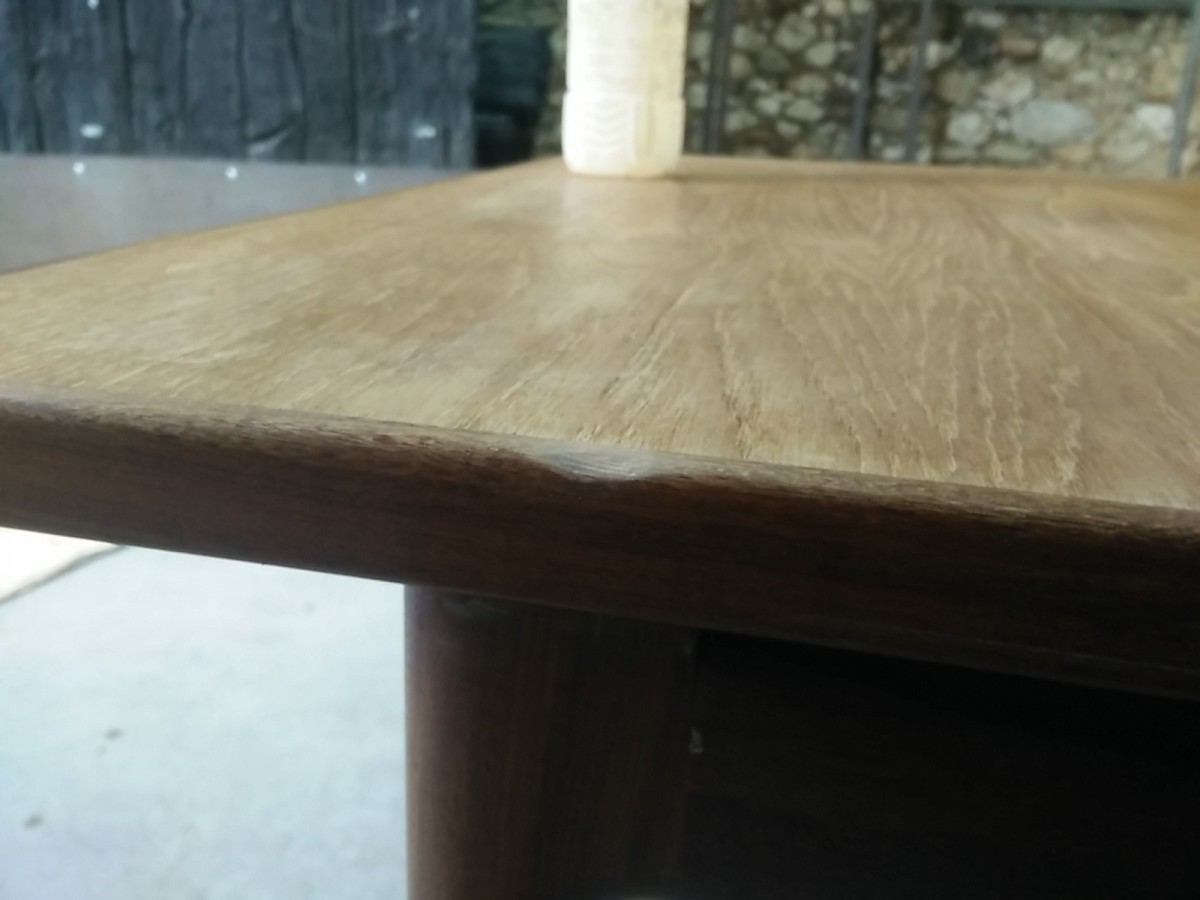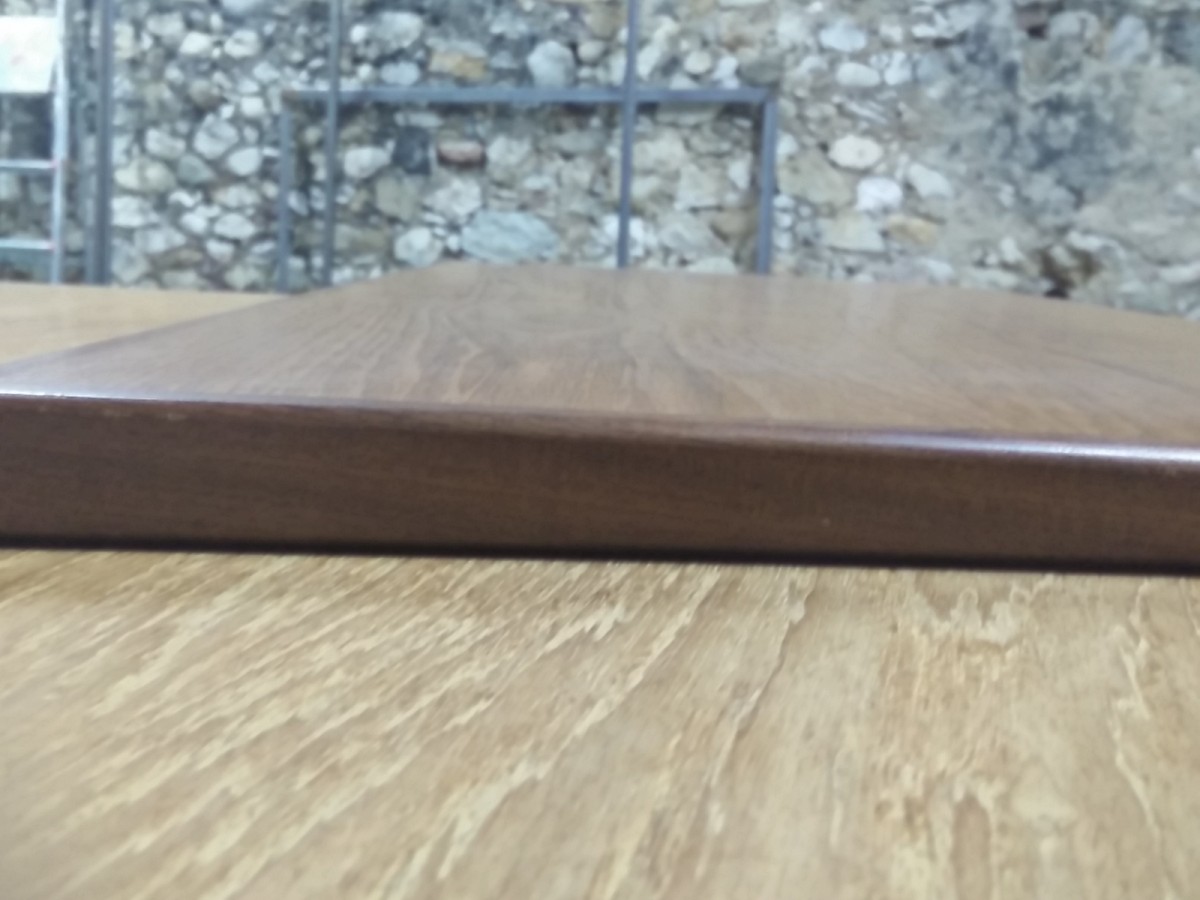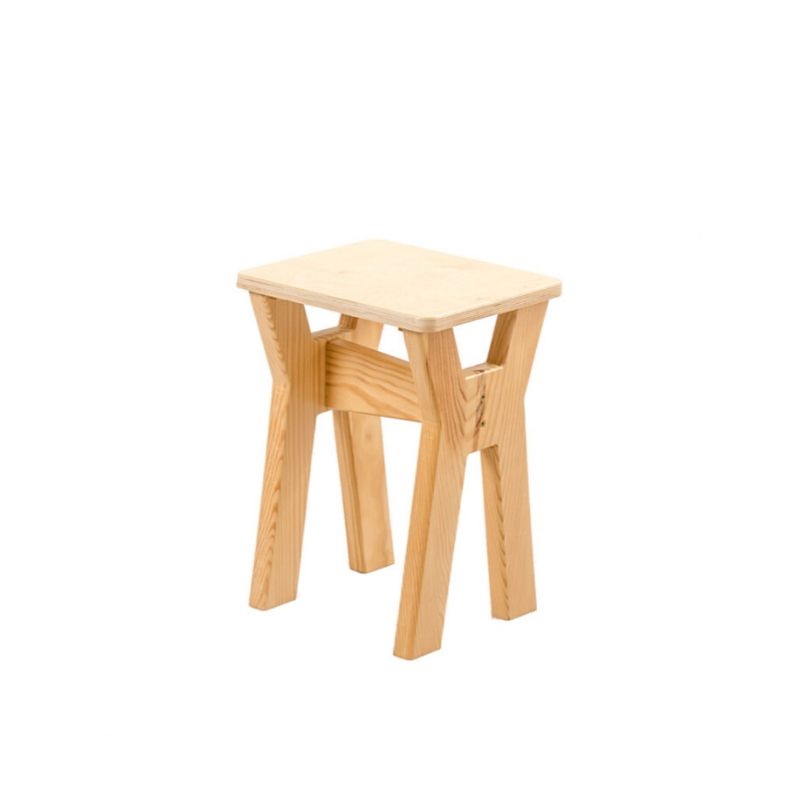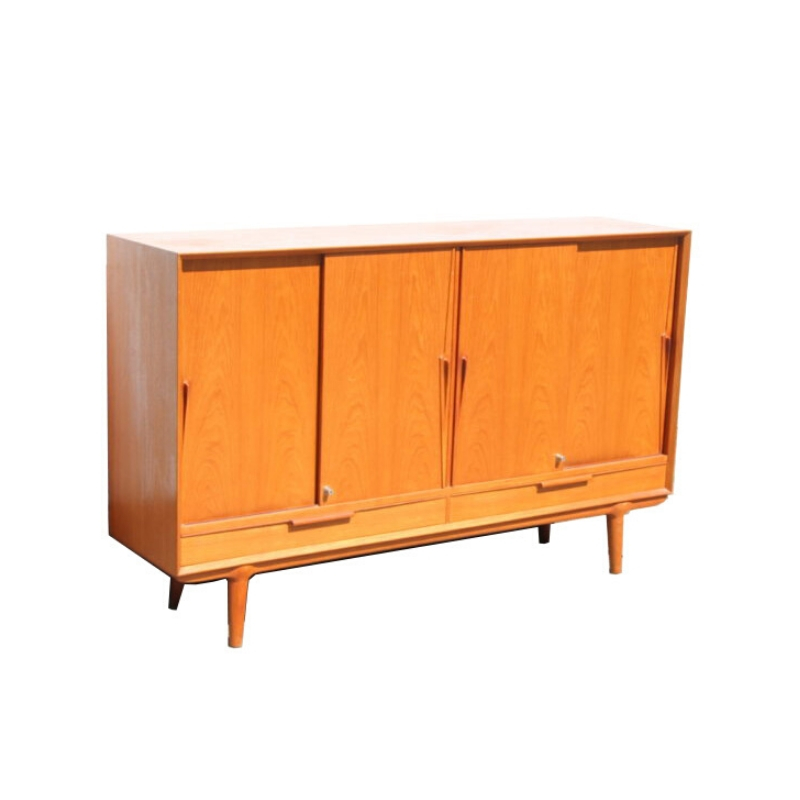Here are some pictures of a table I'm working on. It had a few water rings and stains, and they seem to have come out just fine with oxalic. But I am curious about the texture of the veneer and I was wondering if you had any thoughts about the issue.
The leaves which are tucked under the table are in perfect condition and they are completely smooth and flat. The table top on the other hand is not at all smooth, and you can feel every contour of the grain pattern, ridges and troughs.
This is not localised water damage or something, the entire surface is like this. Does anyone know what causes this? Is there anything that can be done (or should be done)? The colour when wet is OK, it's just the texture that feels rather too "rustic". The top (unvarnished) was very dry, and has probably not been oiled in decades, if ever. always try to avoid sanding as much as possible, and tend to leave anything other than the shallowest marks, which is probably what I will do here, but I'm tempted to try to flat it down here....
 <img class="wpforoimg" src=" http://d1t1u890k7d3ys.cloudfront.net/cdn/farfuture/rj5aj21kHJDI
<img class="wpforoimg" src=" http://d1t1u890k7d3ys.cloudfront.net/cdn/farfuture/rj5aj21kHJDI
Hi Leif, there was very little finish, but quite a lot of grime. Cleaned with denatured alcohol and fine wire wool, then wetted with the oxalic.
It's not that kind of raised grain with fibres, the actual surface is quite smooth, but it undulates distinctly with the grain pattern and feels "ribbed" to the touch. It was already like that before I started doing anything. I just assumed that it was supposed to be like that, until I took out the leaves from underneath.
Perhaps it was wetted sometime before in its life. This was a 1 owner table, and it came with a bunch of other items all completely original and not messed about with at all. The sideboard that came with it had some old stains but it was obvious that they hadn't attempted to remove them. As I mentioned, it's not in any one place it's the same over the entire area, right up to the edging.
Denatured alcohol leeches moisture out of wood, or maybe both moisture and oil, I'm not sure. I use Murphy's Oil Soap to clean really heavy grime off quickly but even that can dry the wood out. So 98% of the time I just use teak oil and #0000 steel wool. It breaks down grime pretty well and then you can just wipe it off with paper towels or rags.
If the wood had that texture before you did any cleaning, then I would suspect that the previous owners used some harsh cleaning agents on it. If it was already dry and you used alcohol to clean it, it would even up even more dried out. I think grain is made up of harder wood formed when the tree is in a slower growth period, and softer wood formed in the growing season (late winter into summer?). I know weathered wood gets that texture and weathered wood is dry wood.
Thanks spanky. I'm pretty sure that I haven't given it any more texture by cleaning it with alcohol, at least on this occasion. I've been using your method for cleaning the oil, on chairs, table legs etc. I don't use your method in cases like these where its a veneered top with staining, because I want the oxalic to be able to really get at the stains. I think you're right and the previous owner (since 1966) cleaned it regularly with water and products. Having said that, the colour is not washed out.
So what do you think I should do with it? I'm thinking that a good soak with some of the starbrite oil would be the next step now that it's clean. Then maybe a light sanding, but I'd be worried that even using a sanding block the harder areas of grain would resist the sanding and I'd just make it more pronounced.
it is soundings to me like perhaps the top got very wet at some point, and not having any finish it absorbed a lot of moisture. This would swell the veneer, and as it dries out it would shrink different amounts depending on the porosity and density of the wood, which would follow the grain.
Leif, your experience is amazing !
I have a couple more questions about you suggestion:
- Should I keep the dust from sanding and add it back to the slurry later?
- They don't sell Watco teak oil here. I have a choice of using danish oil with varnish or oil without varnish (star brite). Which would you suggest?
- I would imagine that the less masochistic way would be to purchase some grain filler, correct?
If you need any help, please contact us at – info@designaddict.com









